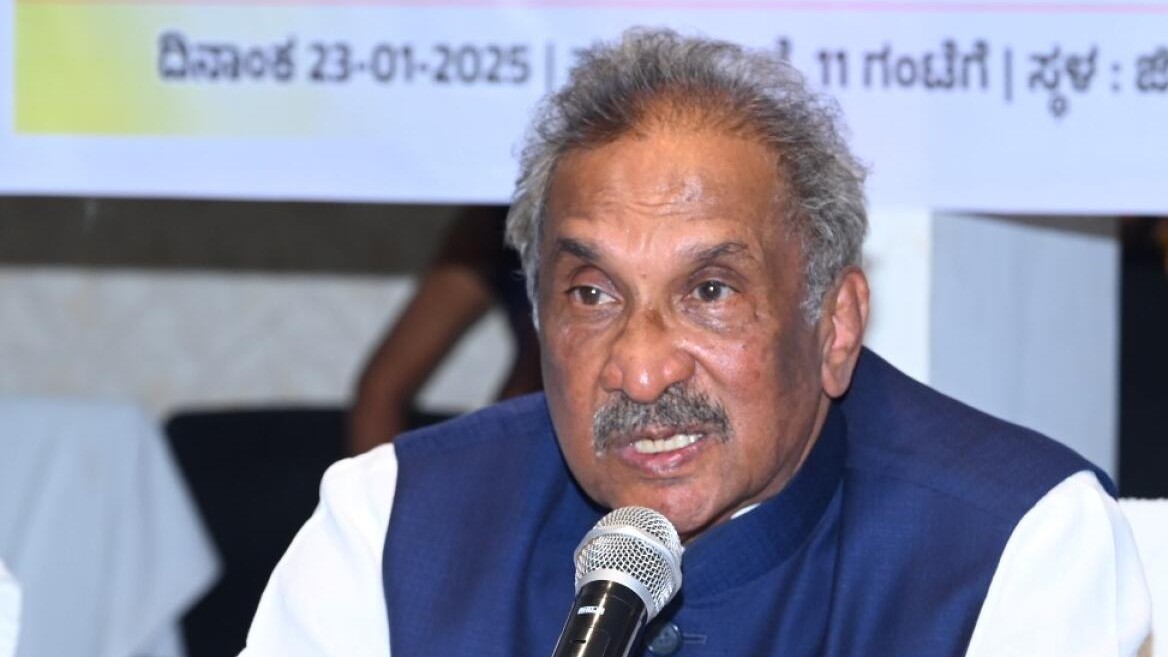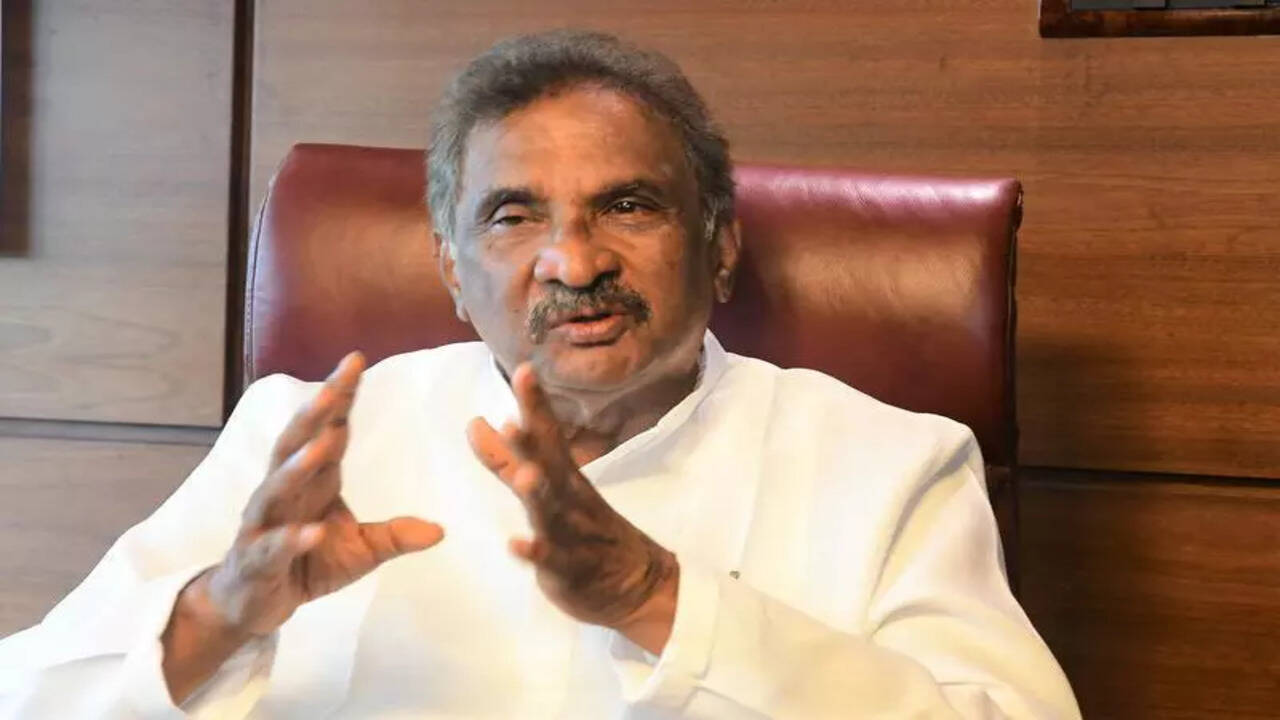The Karnataka government has announced a concrete plan to fill thousands of vacant posts across all electricity supply companies in the state, offering a renewed sense of hope to engineers, technicians, and staff whose workload has sharply increased due to manpower shortages. Energy Minister K. J. George, speaking at a public interaction in Bengaluru, emphasised that the department would immediately begin the recruitment process to strengthen power distribution systems. His announcement comes at a crucial juncture where power supply demands have soared, technical challenges have intensified, and existing workers struggle with mounting responsibilities that affect their efficiency, safety, and morale.
George highlighted that the decision is not merely administrative, but a developmental necessity tied to Karnataka’s rising energy consumption. With the state expanding its industrial zones, accelerating digital infrastructure, boosting rural electrification, and increasing solar and wind energy installations, the energy department must now expand its human resources to keep pace with growing needs. The Minister acknowledged that inadequate staffing had delayed repairs, prolonged outages in rural areas, and imposed excessive burdens on technical teams, especially during monsoon disasters, transformer failures, and load management emergencies. The government, he said, must ensure that human infrastructure matches the scale of physical infrastructure.
Officials say that power companies, including BESCOM, MESCOM, HESCOM, GESCOM, and CESC, currently face major workforce deficiencies in engineering and field roles. These positions include assistant engineers, junior engineers, linemen, substation operators, meter readers, and administrative staff who support billing operations. Experts argue that without adequate staffing, reforms in modern power distribution—such as smart metering, renewable integration, and grid automation—cannot proceed effectively. The government is expected to clear recruitments in phases, allowing companies to function without disruptions while new hires receive training and safety orientation. The plan parallels recent reforms aimed at improving rural connectivity, reducing energy losses, and addressing widespread transformer overloads

Union leaders and employees welcomed the announcement, saying it brings long-awaited relief to front-line workers who risk their lives during routine maintenance and emergency repairs. Field technicians have been at the forefront of dangerous operations involving high-voltage lines, often working without sufficient manpower or advanced safety gear. Representatives from employee associations said that vacancies have turned emergencies into high-risk situations, with workers handling heavy line work that should require two or three people. The new recruitment drive, they hope, will reduce accident risks and support the creation of a more professional, well-equipped workforce capable of managing Karnataka’s increasingly complex power infrastructure.
Rising Demand, Shrinking Workforce: Why Staffing Became a Critical Crisis
One of the major factors forcing the government to accelerate hiring is the unprecedented expansion of electrification under various schemes. Over the past decade, Karnataka has achieved almost universal connectivity, bringing millions of new consumers into the grid. However, staffing levels have not increased in proportion to this growth, leaving existing employees to handle exponentially higher consumer loads. In rural districts, a single lineman frequently handles more than 10 villages, travelling long distances to resolve faults or complaints. Similarly, urban technicians often manage multiple substations, making timely monitoring and maintenance difficult.
Energy experts believe that Karnataka’s current energy infrastructure is transitioning from conventional systems to smart-grid operations, requiring specialised skills. The addition of rooftop solar units, electric vehicle charging points, underground cable works, smart meters, and high-capacity feeders demands trained personnel with technical expertise in digital and grid-synchronised systems. Without proper recruitment, power companies may struggle to upgrade systems efficiently. Universities and technical institutions affiliated with the government are expected to collaborate with power companies by offering skill-specific training modules, creating a future workforce that is capable of operating modernised networks with technological precision.
The Energy Department has also been facing criticism from consumers over power outages during peak demand seasons. Farmers have demanded consistent supply for irrigation pumps, while industries complain that even short interruptions disrupt manufacturing and cause financial losses. Consumer groups argue that delays in fixing local faults or replacing damaged transformers stem not only from budget constraints but from the lack of adequate workers. In certain villages, farmers have protested transformer breakdowns that remained unresolved for days due to insufficient manpower. The government hopes that hiring new technical staff will help reduce such delays, ensuring fair and efficient service for all categories of consumers.
Safety is another issue at the heart of staffing shortages. Power employees frequently encounter dangerous situations without adequate manpower, from climbing poles in rain to handling live wires with outdated protective gear. Industry observers point out that employee safety is often overshadowed by public expectations for fast restoration of electricity. Workers often risk electrocution, burns, and falls while conducting emergency maintenance. George affirmed that improving safety standards must go hand in hand with filling vacancies. Training programmes, modern protective equipment, and safety-compliance auditing may accompany new recruitment, helping companies develop a safety-first culture for field operations.
Public Expectations, Political Accountability, and the Future of Karnataka’s Energy Network
The hiring announcement has triggered discussions about how public expectations shape electricity policy. In urban centres such as Bengaluru, consumers prioritise uninterrupted power for commercial activities, household comfort, and digital services. Rural communities, meanwhile, depend on reliable supply for agriculture, small industries, and drinking water systems powered by electric pumps. These competing demands often put pressure on elected representatives to push for quicker solutions. Recruitment, therefore, becomes both a governance tool and a political statement about the government’s commitment to equitable development across regions.
However, experts warn that recruitment must not be the only solution. Karnataka also needs reforms in management efficiency, consumer grievance systems, and loss-reduction mechanisms. While new hires will reduce staffing overloads, operational inefficiencies in billing, theft-prevention, meter accuracy, and transformer maintenance need policies that emphasise accountability. Analysts note that hiring without structural reforms could improve manpower numbers without necessarily improving service quality. The government, they argue, should combine recruitment with stricter operational targets and transparent public reporting of performance indicators.

Recruitment is also expected to boost employment opportunities for trained youth in Karnataka. Engineering graduates, diploma holders, and ITI-qualified candidates have long been demanding more government technical jobs. Opposition leaders had earlier criticised the delay in filling vacancies despite budget provisions for recruitment. The new move may weaken criticism and draw public support for the government among unemployed youth. Analysts say the move could strengthen the Energy Ministry’s political goodwill, especially in districts where unemployment and power issues intersect, such as rural Bengaluru, Ballari, Belagavi, and Chikkaballapura.
Employee unions have requested the government to ensure that new hires are not contractual but permanent employees. They argue that contractual hiring erodes job security and increases exploitation within essential services. Contract workers, they say, often work longer hours with lower pay and fewer benefits despite managing critical aspects of power supply. The government is yet to clarify whether all vacancies will be filled through permanent positions, but workers hope that stability and proper remuneration will be prioritised. Offering permanent roles would build stronger institutional knowledge and help retain skilled workers.
In addition to strengthening the workforce, George stated that technology upgrades would be implemented alongside recruitment. Smart metering, automated feeder management, digital mapping of infrastructure, and real-time monitoring systems are expected to reduce inefficiencies over time. Skilled workers will be crucial in adopting these systems as Karnataka moves toward smarter and renewable-friendly energy models. With electric vehicle use growing and solar power expanding rapidly, the state needs a robust workforce capable of managing not only electricity flow but also data integration, grid synchronisation, and load balancing for green energy contributions.
Conclusion: A Promise That Must Become Practice
The promise to fill vacant posts across Karnataka’s power supply companies has set high expectations among workers, consumers, and industrial stakeholders. The decision signals a shift toward recognising the importance of human resources in maintaining complex infrastructure. However, its success will depend on the government’s ability to execute recruitment without delays, ensure safety compliance, provide modern training, and balance technological progress with practical ground realities. The move represents more than hiring; it reflects a strategy to build a resilient, future-ready electricity network. If implemented sincerely, the decision could transform Karnataka’s power sector into a stronger, safer, and more efficient systems.
Public policy experts argue that the success of any staffing initiative depends on coordinated decision-making between the Finance Department, recruitment bodies, and power utilities. They say that delays often occur when departments operate independently without shared timelines or unified action plans. A recruitment drive of this scale, they believe, should come with a centralised monitoring system that tracks progress and immediately resolves bureaucratic bottlenecks. Experts insist that if the government can streamline approvals and maintain transparent processes, Karnataka could set an example for other states facing similar challenges in the energy sector.
Another concern raised by consumers is whether improved staffing will translate into faster and more accountable grievance redressal. Currently, many consumers complain that helplines remain unresponsive during outages, and field complaints take significant time to resolve due to limited manpower. Providing additional staff may help reduce waiting periods and allow for dedicated grievance teams to address specific issues like faulty meters, transformer failures, and billing errors. Analysts suggest that appointing consumer service coordinators at subdivision levels could help build trust and improve communication, reducing frustration and enhancing transparency in service delivery.

Power sector researchers emphasise that modernisation must coincide with sustainability goals. They suggest that while staffing shortages urgently need attention, Karnataka must also invest in training workers to operate systems designed to incorporate renewable energy seamlessly. The state’s ambition to expand solar farms, wind installations, and rooftop energy must be supported by a technically skilled workforce capable of integrating clean energy into the grid without destabilising supply. The researchers argue that hiring without future-focused skill development might temporarily solve workload issues but fail to secure long-term energy resilience for Karnataka.
Ultimately, the government’s announcement has opened the door to institutional change, but its success hinges on how effectively recruitment aligns with practical needs. Filling vacancies can relieve pressure on frontline workers, but the true measure of progress will be how well it enhances safety, speeds up maintenance, and prepares the grid for new energy systems. Citizens, industries, and workers now expect the government to convert its commitment into concrete results. Whether through transparent hiring, skill-based training, or consumer-oriented reforms, the coming months will determine whether George’s promise is remembered as a genuine milestone or simply another statement of intent.
Follow: Karnataka Government
Also read: Home | Channel 6 Network – Latest News, Breaking Updates: Politics, Business, Tech & More

